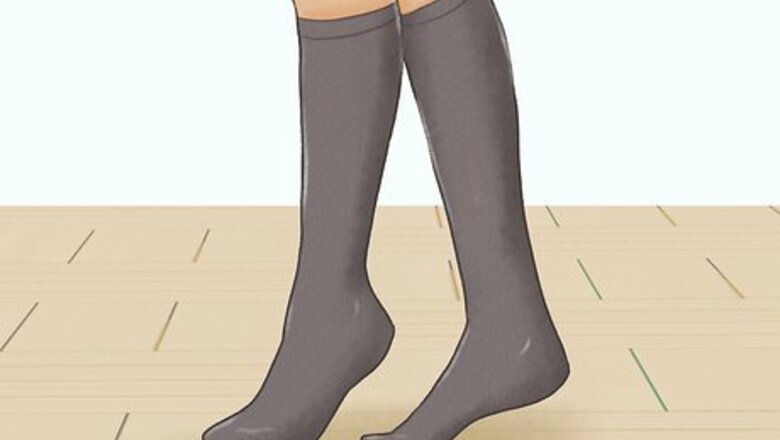
views
Here are 12 effective ways to get rid of varicose veins.
Compression stockings

They put pressure on your leg veins to improve circulation. You can get them prescribed to you or you can find them over the counter at most drug stores. They come in a variety of different sizes and pressures, but you will probably be prescribed a class 1 (light compression) or class 2 (medium compression) stocking. They’re also available in different colors, lengths (to the knee or to the thigh), and different foot styles (covering your whole foot or stopping just before your toes). While compression socks can improve circulation in your legs, you will likely need to wear them all day to see any noticeable results. Replace your compression stockings every 3 to 6 months. Compression socks are not guaranteed to prevent varicose veins from getting worse or prevent new varicose veins from appearing, but they will improve your circulation.
Weight loss
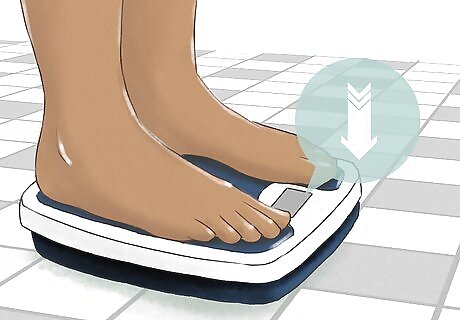
Your legs are under extra stress if you’re overweight. Try to exercise every day and eat a balanced diet to shed pounds and decrease the pressure on your leg veins. When you lose weight, you’ll stop your varicose veins from getting worse and prevent new ones from forming. If you’re having trouble losing weight, talk to your doctor.
Breaks from sitting

Sitting for a long time can put pressure on your leg veins. If you find yourself sitting down for a while, set an alarm on your phone or computer for every 30 minutes. Stand up and stretch, then take a quick walk, even if it’s just around your home or the office. Sitting for too long puts pressure on your veins, which can make your varicose veins worse.
Breaks from standing
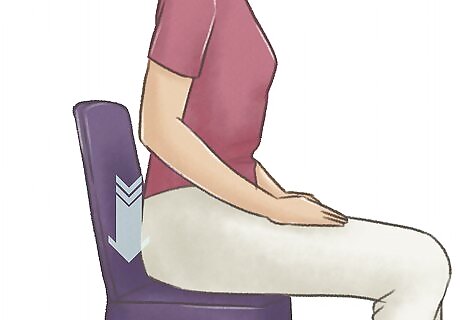
Standing for too long is bad for your circulation. If you work a job where you have to stand up a lot, try to sit down and rest every half an hour or so. It will take the pressure off your circulatory system so your varicose veins don’t get worse. If you can’t sit down, try taking a quick walk or propping your feet up on a stool one at a time.
Elevated legs
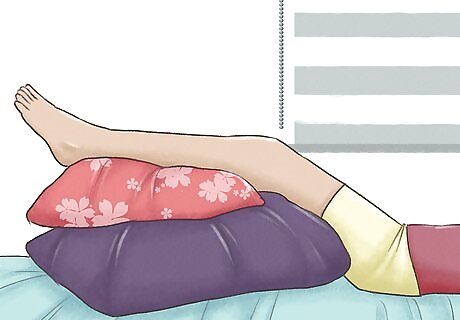
Elevating your legs while you sit can increase circulation. Keeping your legs uncrossed can also reduce pressure on your veins. Try to elevate your legs above the height of your heart whenever you’re sitting or lying down. Place your feet on a stool or another chair, when possible, to improve the circulation in your legs.
Exercise
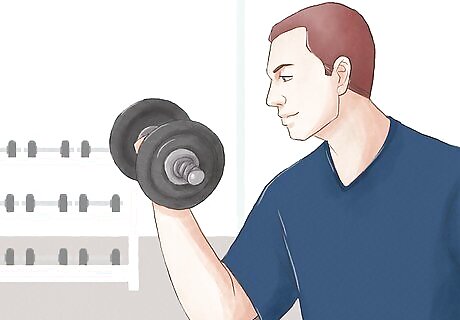
Exercise can improve circulation and muscle tone. A 30-minute walk or jog around your neighborhood a few days a week can greatly improve your overall circulation, especially the circulation in your legs. Focus on exercises that get your heart rate up, like walking, jogging, running, cycling, swimming, or lifting weights.
Sclerotherapy
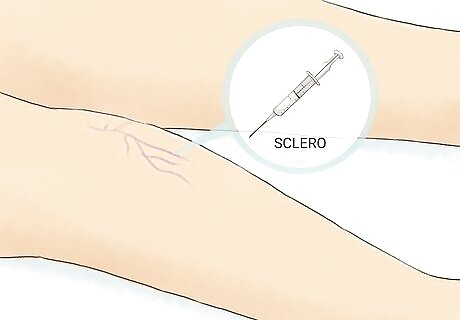
It’s an injection that closes the varicose veins with foam. It will cause them to become less noticeable, and they won’t be as visible in your legs. Your doctor can tell you if you’re a good candidate for this procedure. No anesthesia is needed, but you may need multiple treatments for the same vein. If you’ve had a deep vein thrombosis (DVT) in the past, you may not be eligible for this procedure. Sclerotherapy can have side effects, including blood clots in your other leg veins, headaches, changes in skin color, fainting, and temporary vision problems.
Surface laser treatments

Laser therapy is usually used on smaller veins. It’s a medical procedure done by your doctor that uses strong laser light directed at the varicose vein in short bursts, eventually causing it to disappear. The treatment is not generally effective for varicose veins larger than 1/10 inch (3 mm). Laser treatments can last for 15 to 20 minutes, and you may need 2 to 5 treatments before you get rid of the varicose veins. No incisions are made, but the laser can be painful nonetheless.
Endovenous laser therapy
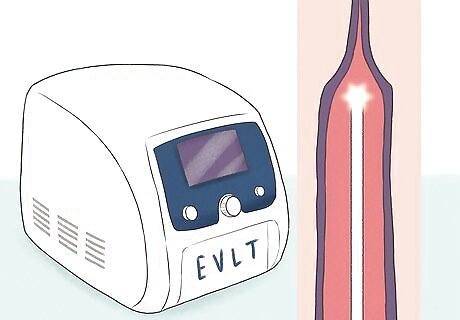
Lasers or radio waves will kill the vein with heat, causing it to close. After the vein closes, it will scar over and fade from view. Deeper varicose veins, called saphenous veins, are usually treated with this method. Your doctor will insert a catheter, or small tube, into the problem vein through which a small probe is inserted. The laser or radio waves are transmitted through the tip of this probe, closing off the vein. Healthy veins around the closed vein take over the flow of blood. Varicose veins on the surface that are connected to the treated vein usually close up shortly after treatment, as well. This is a newer procedure, and it usually replaces the need to surgically remove the veins.
Vein ligation and stripping

Your doctor will tie off the vein and then remove it. They will make small incisions in your leg and then pull the vein out once it’s been tied off. This treatment was more common in the past, but is generally only used for patients who cannot undergo endovenous thermal ablation. You will receive anesthesia during this treatment, and the treatment will be performed in an operating room. After the veins are removed, deeper veins will usually take over for the veins that are now missing, so blood flow should not be affected.
Ambulatory phlebectomy

Your doctor can remove smaller varicose veins from your leg. They will insert small hooks into your skin, then pull the vein out through the incisions made by the hook. Your leg will be treated with anesthesia, but you won’t be put to sleep for this procedure. Scarring is usually minimal with this treatment.
Endoscopic vein surgery
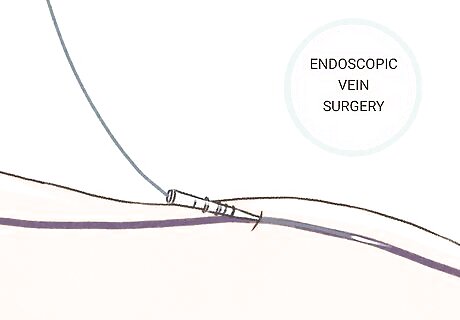
This is usually saved for severe varicose veins. In this treatment, an endoscope is inserted into the vein and used to close the vein from the inside. The endoscope, a tiny camera attached to the end of a thin tube, is inserted into the vein and pushed through. A device on the end of the tube seals the vein shut. This treatment is generally only used for varicose veins causing skin ulcers.















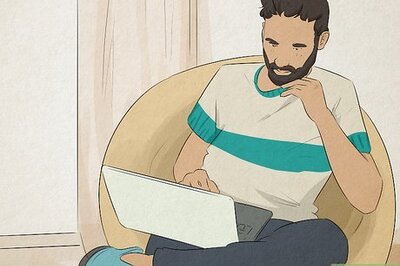

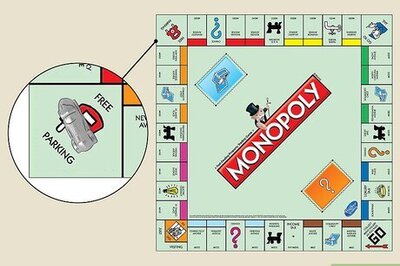

Comments
0 comment